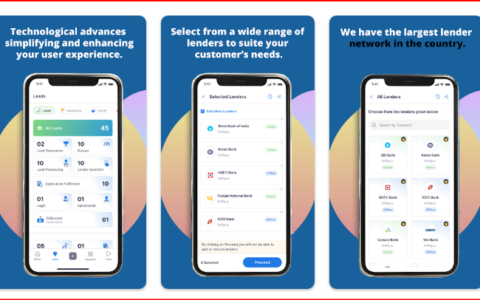
In the vast landscape of web development, the backend is the silent engine that powers the functionalities, processes data, and ensures the seamless operation of applications. This journey takes us deep into the realm of backend development, exploring its fundamental concepts, key technologies, best practices, and the evolving landscape that shapes the backbone of modern web applications.
I. Understanding Backend Development
1.1 Defining Backend Development
Backend web development refers to the server-side of web development, where the application logic, databases, and server interact to deliver dynamic and interactive web applications. It encompasses everything that happens behind the scenes to ensure the frontend, the user interface, functions seamlessly.
1.2 The Role of Backend in Web Development
The backend is responsible for managing data, executing complex algorithms, handling user authentication, and ensuring the security and performance of web applications. It acts as the bridge between the frontend and the server, orchestrating the flow of information.
1.3 Key Components of Backend Development
- Server: The server is the foundational component that receives and processes client requests, executing actions and returning responses.
- Database: Backend web development involves interacting with databases to store, retrieve, and manage data efficiently.
- Application Logic: The core logic of an application resides in the backend, including algorithms, calculations, and business rules.

II. Languages and Frameworks in Backend web Development
2.1 Popular Backend Programming Languages
- JavaScript (Node.js): With the advent of Node.js, JavaScript has extended its reach to the backend, allowing developers to use a single language for both frontend and backend web development.
- Python: Known for its readability and versatility, Python is widely used for backend web development, particularly in web frameworks like Django and Flask.
- Java: Renowned for its scalability, Java is a stalwart in enterprise-level backend web development.
- Ruby: Ruby, coupled with the Ruby on Rails framework, offers a streamlined and developer-friendly approach to backend web development.
2.2 Backend Frameworks
- Express.js (Node.js): A minimalist web application framework for Node.js, Express.js simplifies the process of building robust backend systems.
- Django (Python): Django is a high-level Python web framework that emphasizes rapid development and clean, pragmatic design.
- Spring Boot (Java): Spring Boot streamlines the development of Java applications, providing a comprehensive framework for building scalable backend systems.
- Ruby on Rails (Ruby): Ruby on Rails, or Rails, follows the convention over configuration (CoC) and don’t repeat yourself (DRY) principles, promoting efficient and elegant code.
2.3 Database Management Systems
- MySQL: A popular open-source relational database management system (RDBMS) known for its speed, reliability, and ease of use.
- PostgreSQL: Known for its extensibility and compliance with SQL standards, PostgreSQL is a powerful, open-source object-relational database system.
- MongoDB: A NoSQL database that stores data in flexible, JSON-like documents, providing high performance and scalability for certain types of applications.
III. Architectural Patterns in Backend web Development
3.1 Monolithic Architecture
In the traditional monolithic architecture, all components of an application are tightly integrated into a single codebase. While simple, it may pose challenges in scalability and maintenance.
3.2 Microservices Architecture
Microservices involve breaking down an application into smaller, independently deployable services. This architecture promotes scalability, flexibility, and fault isolation.
3.3 Serverless Architecture
Serverless architecture abstracts the server infrastructure, allowing developers to focus solely on writing code. Services are executed in response to events without the need for dedicated servers.
3.4 Event-Driven Architecture
Event-driven architecture involves the production, detection, consumption, and reaction to events. It’s particularly useful in scenarios where components need to communicate asynchronously.
IV. Best Practices in Backend Development
4.1 Scalability
Designing for scalability ensures that the backend can handle increased load. Strategies like load balancing, horizontal scaling, and caching contribute to a scalable architecture.
4.2 Security Measures
Backend developers must implement robust security measures to protect against vulnerabilities. This includes input validation, encryption, and adherence to security best practices.
4.3 Database Optimization
Efficient database management is critical for backend performance. Techniques like indexing, query optimization, and proper database design contribute to optimal data handling.
4.4 API Design
Well-designed APIs are crucial for effective communication between frontend and backend components. RESTful API design principles and documentation contribute to a cohesive development process.
V. Evolution and Trends in Backend web Development
5.1 Serverless Computing
The rise of serverless computing allows developers to build and run applications without managing servers, emphasizing code-centric development.
5.2 GraphQL
GraphQL, an alternative to REST, provides a more efficient and flexible approach to data fetching, allowing clients to request only the data they need.
5.3 Edge Computing
Edge computing involves processing data closer to the source, reducing latency and improving overall system performance.
5.4 Artificial Intelligence and Machine Learning Integration
Backend development is increasingly incorporating AI and machine learning to enhance functionalities like data analysis, pattern recognition, and decision-making.
VI. Challenges and Solutions in Backend Development
6.1 Ensuring Data Security and Privacy
The increasing importance of data security requires robust encryption, secure authentication, and compliance with data protection regulations.
6.2 Achieving Optimal Performance
Performance optimization is an ongoing challenge. Techniques such as code profiling, caching, and efficient database management contribute to addressing performance issues.
6.3 Managing Microservices Complexity
While microservices architecture offers scalability, managing the complexity of multiple services requires proper orchestration, monitoring, and error handling.
VII. Conclusion: Steering the Ship in Backend web Development
As we navigate the depths of web development, it becomes evident that this foundational aspect of web development is ever-evolving. From programming languages and frameworks to architectural patterns and emerging trends, web development continues to shape the digital landscape. As developers strive for scalability, security, and efficiency, the remains the linchpin that powers the seamless functioning of web applications.
Whether it’s the elegance of a monolith, the flexibility of microservices, or the abstraction of serverless architecture, the choices made in backend web development reverberate through the user experience and the success of modern web applications. As we set sail into the future, the journey through the backend promises innovation, challenges, and endless opportunities for those navigating the ship of web development.
Q1: What is web development, and how does it differ from frontend development?
A1: web development focuses on server-side processes, managing data, and ensuring the logic behind web applications. It differs from frontend development, which concentrates on the user interface and client-side interactions.
Q2: Which programming languages are commonly used for web development?
A2: Commonly used programming languages for web development include JavaScript (Node.js), Python, Java, and Ruby. The choice often depends on the specific requirements of the project.
Q3: What role do frameworks play in web development?
A3: Frameworks provide pre-built structures and components that expedite web development. They offer solutions for common tasks, promote code organization, and enhance overall development efficiency.



